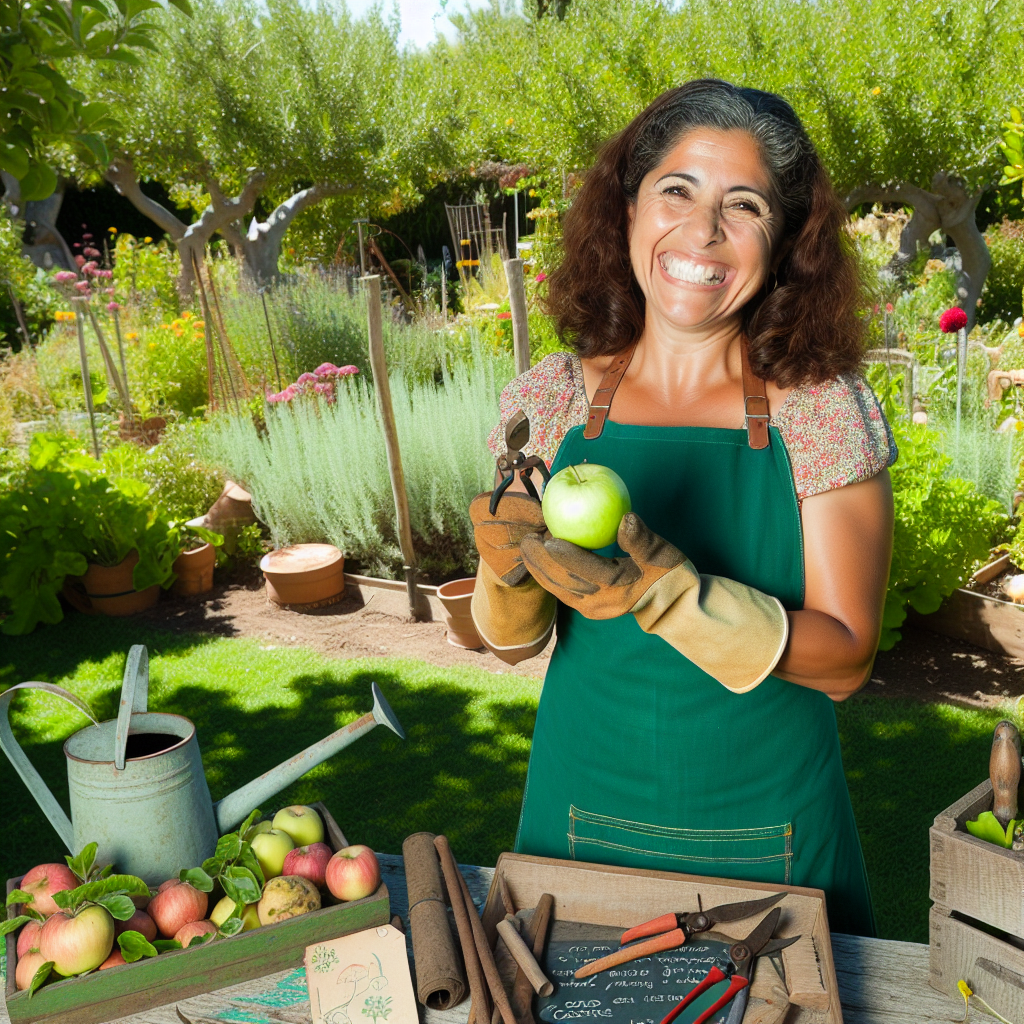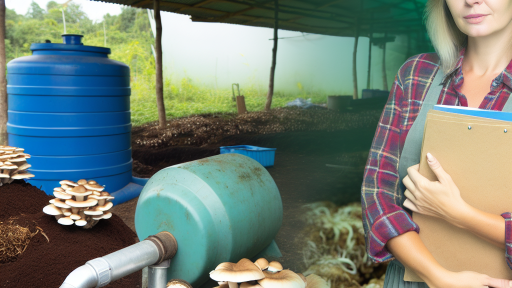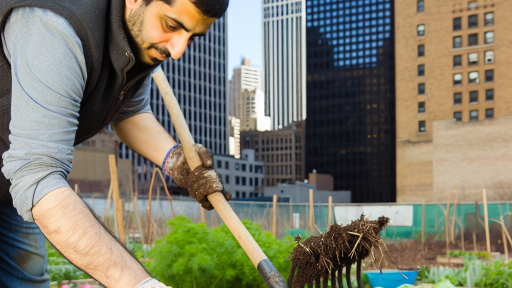Understanding Heirloom Varieties and Their Unique Needs
What Are Heirloom Varieties?
Heirloom varieties refer to plants that are passed down through generations.
They often possess unique flavors and traits not found in modern hybrids.
Typically, they are open-pollinated, allowing for seed saving.
This practice helps maintain genetic diversity in gardens.
Why Choose Heirloom Seeds?
Heirloom seeds contribute to biodiversity in our food systems.
They allow gardeners to save seeds and preserve old plant varieties.
Moreover, heirlooms can adapt better to local growing conditions.
Many gardeners enjoy the stories behind heirloom varieties.
Special Care Requirements
Heirloom plants often require specific growing conditions.
They may need tailored watering and fertilizing practices.
Additionally, they can be more susceptible to pests and diseases.
Common Traits of Heirloom Plants
- Distinctive flavors that enhance culinary experiences.
- A wide range of colors and shapes, making gardens more visually interesting.
- Traditional growing methods that are environmentally sustainable.
Importance of Soil Health
Soil quality plays a crucial role in the health of heirloom plants.
Amending soil with organic matter can greatly benefit these varieties.
Regular testing ensures balanced nutrients, which is vital for growth.
Seasonal Adaptations
Adapting care throughout the seasons is important for heirloom gardens.
Transform Your Agribusiness
Unlock your farm's potential with expert advice tailored to your needs. Get actionable steps that drive real results.
Get StartedIn spring, ensure proper soil temperatures for planting seeds.
During summer, monitor moisture levels closely.
As fall approaches, prepare plants for cooler temperatures.
Winter care may involve protecting plants from harsh weather conditions.
Spring Care: Preparing the Soil and Planting Tips
Assessing Soil Quality
Begin by assessing the soil quality in your heirloom garden.
Check for texture, drainage, and nutrient levels.
This evaluation sets the foundation for healthy plants.
Improving Soil Health
Add organic matter to boost soil health.
Compost and well-rotted manure work wonders.
A soil test can guide the addition of specific nutrients.
Soil Preparation Techniques
Till the soil to enhance aeration and reduce compaction.
Ensure that the top six to twelve inches are loose and crumbly.
This process helps roots grow deeper and stronger.
Choosing Heirloom Seeds
Select heirloom seeds suited for your climate and soil type.
Researching varieties expands your gardening possibilities.
Some seeds thrive better in specific conditions than others.
Optimal Planting Conditions
Plant in spring after the last frost date in your area.
Monitor local weather reports for temperature fluctuations.
This timing ensures seedlings establish well.
Planting Techniques
Follow the recommended planting depth for each seed variety.
Space seeds according to their growth requirements.
This spacing promotes air circulation and reduces disease risks.
Watering Strategies
Water newly planted seeds gently to avoid displacing them.
Use a fine mist or a watering can for best results.
Showcase Your Farming Business
Publish your professional farming services profile on our blog for a one-time fee of $200 and reach a dedicated audience of farmers and agribusiness owners.
Publish Your ProfileEnsure consistent moisture without waterlogging the soil.
Mulching for Protection
Apply a layer of mulch to retain moisture and suppress weeds.
Organic mulches like straw or wood chips work effectively.
Mulching also regulates soil temperature as plants grow.
Summer Maintenance: Watering Techniques and Pest Management
Watering Techniques
Proper watering is crucial for heirloom gardens in the summer.
First, assess the moisture levels in your soil regularly.
Use a moisture meter for accurate readings.
If the top inch of soil feels dry, it’s time to water.
Deep watering is more effective than shallow watering.
Apply water slowly to allow deep penetration.
This technique encourages strong root growth.
Consider watering in the early morning or late afternoon.
These times reduce evaporation and fungal diseases.
Add mulch around plants to retain moisture.
Organic materials like wood chips work best as mulch.
Pest Management
Monitor your heirloom plants for pests regularly.
Identifying issues early can prevent major infestations.
Use integrated pest management (IPM) techniques to control pests.
Start with physical barriers like row covers or nets.
These can effectively block insects from reaching plants.
Introduce beneficial insects to your garden.
Ladybugs and lacewings can help control aphid populations.
Consider organic pesticides if infestations occur.
Always follow application instructions for efficacy and safety.
Encourage a diverse garden to promote natural pest predators.
Gain More Insights: Building A Seed Bank On Your Small Farm
Fall Harvesting
Best Practices for Gathering Heirloom Crops
Harvesting heirloom crops in the fall requires attention to detail.
Timing plays a crucial role in the quality of your harvest.
Begin by checking your crops regularly for ripeness.
Use a gentle grip to avoid bruising when picking the fruits or vegetables.
It’s important to harvest during cooler parts of the day.
This helps preserve freshness and flavor.
Understanding Optimal Ripeness
Identifying the right moment for harvest is key.
Examine color and firmness to assess ripeness.
Different crops have unique indicators of maturity.
For example, tomatoes should be full-colored and slightly soft.
Cucumbers need to be firm and shiny to indicate readiness.
Harvesting Techniques
Employ proper techniques to maximize your yield.
Use sharp, clean tools like knives or pruners.
Cut stems rather than pulling them from the plant.
Showcase Your Farming Business
Publish your professional farming services profile on our blog for a one-time fee of $200 and reach a dedicated audience of farmers and agribusiness owners.
Publish Your ProfileThis minimizes damage to the plant’s health and future production.
Also, make sure to wear gloves to protect your hands.
After Harvest Care
Proper care post-harvest ensures quality storage.
Immediately clean your crops to remove any dirt or pests.
Store them in a cool, dry place to prolong shelf life.
Be mindful of humidity, as excess moisture can lead to rot.
Consider using breathable containers for better air circulation.
Documenting Your Harvest
Keep a log of your harvest to improve future practices.
Note the varieties, quantities, and conditions during harvesting.
This data will help you make informed decisions next season.
Regular updates will also help track your heirloom preservation efforts.
Delve into the Subject: Companion Planting Ideas for Organic Farms
Winter Preparations: Protecting Plants and Planning for Next Year
Protecting Your Plants
Winter can be harsh on your heirloom plants.
Start by mulching around your plants.
Use organic materials like straw or shredded leaves.
This insulates the roots and retains moisture.
Next, cover sensitive plants with burlap or frost cloth.
Secure the covers to withstand strong winds.
Additionally, move potted plants closer to the house.
This provides extra warmth during cold snaps.
Finally, prune dead or diseased branches before the frost.
This promotes healthier growth in spring.
Planning for Next Year
Winter is the perfect time to plan your garden layout.
Review your notes from last season’s harvest.
Consider which heirloom varieties thrived and which did not.
Create a seed order list based on your findings.
Furthermore, research new heirloom varieties to try.
Many local seed saving organizations provide options.
Join gardening forums for inspiration and advice.
Networking with farmers can also be beneficial.
Preparing Soil for Spring
Soil health is vital for a successful garden.
Consider implementing a soil test this winter.
This helps determine nutrient deficiencies.
Based on the results, add organic amendments.
Compost is a great option to enrich garden soil.
Additionally, cover crops can prevent erosion and improve structure.
Choose varieties that thrive in your climate.
Finally, plan for crop rotation to prevent pest buildup.
Learn More: Maximizing Yields with Edible Landscaping

Organic Fertilization: How to Feed Your Heirloom Garden Seasonally
Understanding Organic Fertilizers
Organic fertilizers enhance soil health and promote plant growth.
Showcase Your Farming Business
Publish your professional farming services profile on our blog for a one-time fee of $200 and reach a dedicated audience of farmers and agribusiness owners.
Publish Your ProfileUnlike synthetic options, they fulfill nutrient needs over time.
This gradual release supports continuous growth in heirloom varieties.
Moreover, they improve soil structure and microbiome diversity.
Types of Organic Fertilizers
Several options are available for your heirloom garden’s needs.
- Compost enriches soil with nutrients and organic material.
- Manure offers high nitrogen content and essential trace minerals.
- Bone meal provides phosphorus, crucial for root development.
- Kelp meal adds potassium and micronutrients for overall health.
- Fish emulsion boosts nitrogen and supports foliage growth.
Seasonal Application Tips
Applying fertilizers seasonally ensures plants receive necessary nutrients.
In early spring, incorporate compost to kickstart growth.
During mid-summer, use fish emulsion to support vigorous foliage.
In the fall, apply manure to prepare soil for winter rest.
Gradually work fertilizers into the soil for better absorption.
Signs Your Garden Needs Fertilization
Healthy heirloom plants exhibit vibrant leaves and robust growth.
Yellowing leaves often indicate nutrient deficiencies.
Stunted growth signals a lack of essential nutrients.
Regularly inspect plants for signs of stress or poor development.
Best Practices for Organic Fertilization
Always test your soil before applying any fertilizer.
This ensures you address specific nutrient requirements.
Follow recommended application rates to avoid over-fertilization.
Consider companion planting to maximize nutrient uptake.
Additionally, layer organic matter such as mulch to retain moisture.
You Might Also Like: Crop Rotation Plans for Organic Farmers
Companion Planting: Maximizing Growth Through Seasonal Pairing
Understanding Companion Planting
Companion planting utilizes the natural relationships between plants.
Certain plants can enhance each other’s growth while deterring pests.
This method improves overall garden health and productivity.
Benefits of Companion Planting
Companion planting offers numerous advantages for heirloom gardens.
- Improves crop yield and quality.
- Disguises vulnerable plants from pests.
- Encourages biodiversity in the garden.
- Utilizes available garden space efficiently.
Choosing the Right Companions
Selecting compatible plants is crucial for successful companion planting.
Consider the needs of each plant regarding sunlight, water, and nutrients.
Examples include planting tomatoes with basil for enhanced flavor.
Additionally, marigolds repel nematodes, benefiting neighboring crops.
Seasonal Pairing Strategies
Seasonal adjustments can maximize your garden’s effectiveness.
Springtime is ideal for planting legumes with root vegetables.
This combination improves soil health through nitrogen fixation.
In contrast, summer planting might pair squash with corn.
This arrangement provides natural support for climbing plants.
Implementing Companion Planting in Your Garden
Start by researching local growing conditions and plant varieties.
Create a planting schedule that aligns with seasonal changes.
For optimal results, maintain proper plant spacing and heights.
Remember to rotate crops each year to maintain soil fertility.
Seasonal Challenges: Dealing with Climate Variations and Plant Diseases
Understanding Climate Variations
Climate changes can impact gardening significantly.
Different regions experience varying weather patterns.
Adapt your planting schedule according to seasonal shifts.
Monitor local forecasts for sudden changes in weather.
Showcase Your Farming Business
Publish your professional farming services profile on our blog for a one-time fee of $200 and reach a dedicated audience of farmers and agribusiness owners.
Publish Your ProfileThis helps protect your heirloom plants from unexpected frost.
Strategies for Managing Plant Diseases
Heirloom plants are often more susceptible to diseases.
Regularly inspect your garden for signs of distress.
Look for yellowing leaves, spots, or wilting plants.
Use organic fungicides to treat affected plants early.
Rotate crops annually to reduce soil-borne diseases.
Preventive Measures for Plant Health
Healthy plants are less prone to diseases.
Ensure proper spacing between your plants for airflow.
Mulching helps retain moisture and suppress weeds.
Fertilize with organic compost to boost soil health.
Responding to Pest Infestations
Pests can quickly ruin heirloom crops if not managed.
Identify common pests in your area to prepare adequately.
Implement natural repellents like neem oil or soap sprays.
Encourage beneficial insects that prey on harmful pests.
Utilizing Companion Planting
Companion plants can enhance growth and protect against pests.
Pairing marigolds with tomatoes deters nematodes effectively.
Herbs like basil can improve the flavor of surrounding plants.
Experiment with combinations to find what works best.
Additional Resources
Maximizing Production in Small-Scale Flower Farming: Tips for …
A Complete Guide to Growing Cherry Tomatoes – Fine Gardening




